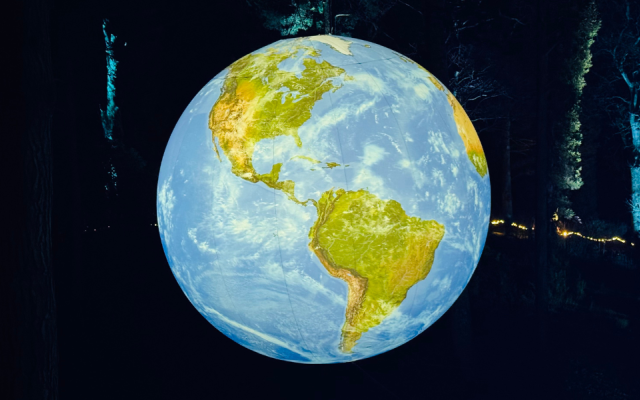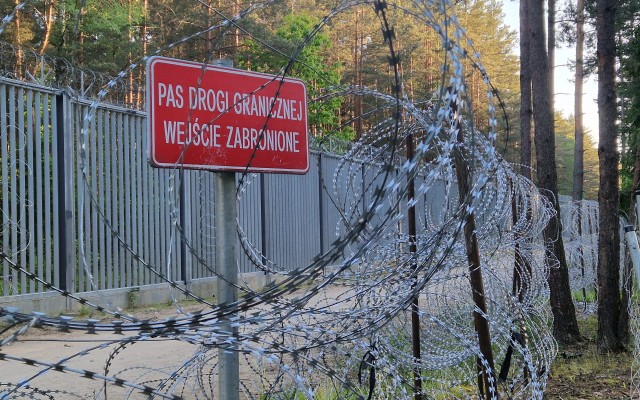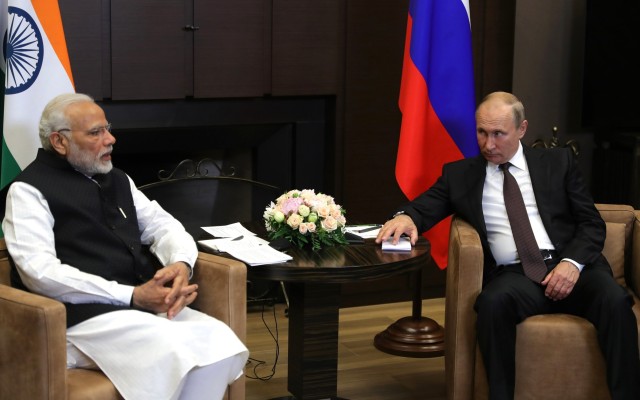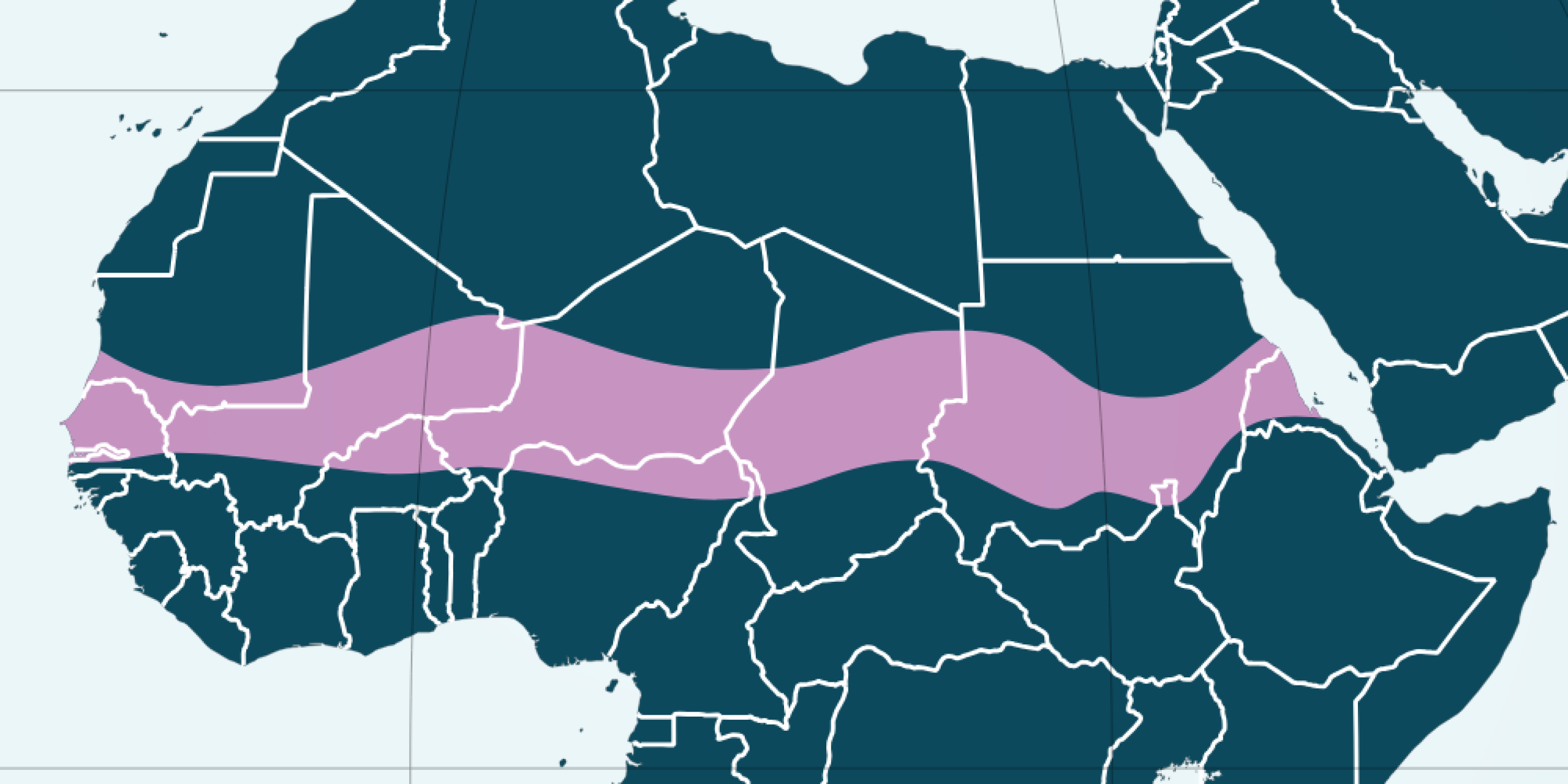
Democratic Backsliding in the Sahel and the Myth of Migration to Europe
Published on: December 16th, 2024
Read time: 12 mins
In this contribution to Bulletin 31, Michael Nwankpa argues that democratic backsliding in the Sahel is partly caused by cynical interventions by Western states motivated by myths of mass African migration.
Introduction
Since the beginning of the twenty-first century, there have been at least 40 coup attempts in Africa, with half of those successful. Although coups and military regimes were prevalent in the 70s up until the late 90s, when many African states democratized following the end of the Cold War, in the 2000s coup plotters and military rulers have failed to consolidate power. America and the West tolerated military regimes during the Cold War as they sought to gain advantage over the Soviet Union and its promotion of communism on the continent. However, with American hegemony established in the early 1990s, following the end of the Cold War, the West abandoned its tacit and sometimes explicit support for military rulers and regimes. This event, supported by internal conditions in Africa, ushered in the Third Wave of democratization with many African countries embracing multiparty democracy. The international community and the African Union, AU, has since then maintained a strong position against military takeovers—making it difficult for coup plotters to entrench themselves in power. However, in the last decade, Africa has witnessed a resurgence in direct military intervention through coups d’état. Interestingly, many of the coups are occurring in the Sahel—a semiarid region of western and northcentral Africa that stretches from the Atlantic Ocean eastward through northern Senegal, southern Mauritania, the great bend of the Niger River in Mali, Burkina Faso, southern Niger, northeastern Nigeria, south-central Chad and into Sudan. Indeed, the seven military coups that occurred in the last four years (2020-24) occurred in four countries in the Sahel: Mali (18 August 2020 and 24 May 2021), Guinea (5 September 2021), Sudan (25 October 2021), Burkina Faso (24 January 2022 and 30 September 2022) and Niger (26 July 2023). The last successful military coup occurred in the small central African country of Gabon on 30 August 2023. Many of the recent coups in Africa are occurring in former French colonies.
The militaries in former French colonies in the Sahel, including Mali, Burkina Faso and Niger, have capitalized on a growing anti-French and, by extension, anti-Western sentiment, to seize power from elected democratic governments. They have managed to hold on to power so far, spurning the transition process to democratic rule, based on popular discontentment against the West and support from non-Western superpowers, mainly Russia. Bolstered by military support from the Wagner Group, a Russia-supported mercenary organization, and threat of military intervention from ECOWAS, the regional government, the junta governments of Mali, Burkina Faso and Niger have withdrawn from ECOWAS and formed a military alliance, the Alliance of Sahel States (AES). The formation of AES provides impetus for the consolidation of military rule in Africa as it emboldens other authoritarian governments. The military governments of the AES have cancelled existing military agreements with France, the EU and other Western nations, including the sacking of a UN stabilization mission in Mali, MINUSMA. Chad and Senegal have also recently cancelled their military cooperations with France. In response, the EU and other Western donors have either reduced, suspended and/or terminated their aid to the AES states. The Western-led stabilization missions and interventions in the Sahel since 2012 have produced very little improvement in the lives of the Sahelian people.
Western-led Interventions and Stabilization Missions in the Sahel, 2012-2024: Motivations and Impact
In 2012, France intervened in Mali, at the invitation of the interim government of Mali, to fight against the Tuareg rebel group, National Movement for the Liberation of Azawad (Mouvement National pour la Libération de l’Azawad; MNLA) and Islamic Jihadist groups (such as Ansar Dine, AQIM and Movement for Oneness and Jihad in Africa, MUJAO) who had captured northern Mali and started threatening the control of power by the central government. This sparked a flurry of international and regional military and peacekeeping interventions in Mali and the greater Sahel. Some of the missions included two French-led military interventions (Operation Serval, 2013-14, and Operation Barkhane, 2014-2022), a French-supported regional coalition force, G5-Sahel Force (comprising the armies of Mali, Niger, Mauritania, Burkina Faso and Chad), the UN Security Council (UNSC)-backed African-led International Support Mission in Mali (AFISMA), the UN Multidimensional Integrated Stabilization Mission in Mali (MINUSMA, 2013-2023), the European Union Training Mission in Mali (EUTM, 2013-2024), and the European Union Capacity Building Mission in Mali (EUCAP Sahel Mali, 2015-present).
Evidently, the Sahel witnessed unprecedented but not completely unjustifiable interventions and stabilization missions. The interventions and military operations responded to the huge challenges that the Sahel region presents. The Sahel region is not only considered the poorest region of the world, but also the region most affected by climate change (marked by long droughts, extreme flooding during the monsoon periods, high precipitation variability and extremely high temperatures that contribute to food insecurity and poverty). It is also faced with challenges relating to refugees and migrants, transnational organized crime, and jihadist insurgencies.
While these present credible concerns and justifiable reasons for intervention, however, external interventions in the Sahel are mainly motivated by reasons other than these. The external interveners are driven by their own strategic interests which revolve around preventing mass migration to Europe and countering insurgency, rather than a genuine interest in finding a lasting solution to the crisis. This explains the highly securitized and militarized nature of the interventions in the Sahel. Western nations’ securitized interest in the Sahel appears incongruent to the immediate concerns of the Sahelian people which is their ‘living conditions, which have come under immense pressure’. Morten Bøås, The Sahel crisis and the need for international support (Nordiska Afrikainstitutet, 2019), 5. Interestingly, military interventions in the Sahel predate the 2012 mission in Mali and reflect other deeper underlying motivations which revolve around reconfiguring a new political order. Signe Marie Cold-Ravnkilde and Katja Lindskov Jacobsen, ‘Disentangling the security traffic jam in the Sahel: constitutive effects of contemporary interventionism’, International Affairs 96, no. 4 (2020): 855-874.
The plethora of interventions in the Sahel has made very little impact. The security situation in the region remains unchanged or has even worsened. There seems to be a consensus in the literature that the external interventions exacerbated the conflict and insecurity in the Sahel. Clionadh Raleigh, Héni Nsaibia and Caitriona Dowd, ‘The Sahel crisis since 2012’, African Affairs 120, no. 478 (2021): 123-143; Ahmet Berat Çonkar, ‘Development and security challenges in the Sahel region’, Draft Report. Mediterranean and Middle East Special Group (GSM). Nato Parliamentary Assembly 6 (2020); Bruno Charbonneau, ‘The climate of counterinsurgency and the future of security in the Sahel’, Environmental Science & Policy 138 (2022): 97-104; Denis M Tull, ‘Operation Barkhane and the future of intervention in the Sahel: the shape of things to come’, SWP Comment (2021): 4. External interventions in the Sahel have also undercut democracy and consequently increased militarization. This is done through the tacit support of and cooperation with authoritarian governments, who are amenable to external strategic interests. According to Rida Lyammouri, an expert on the Sahel, the civilian ‘regimes that were ruling Niger, Mali and Burkina Faso, despite [being] praised by the West, were known to be corrupt, they were known to be abusing power, there were many scandals involving the presidents of the three countries, yet the West continued to close their eyes to what was happening’. Interview with Rida Lyammouri, ‘The Alliance of Sahel States: A Challenge to ECOWAS’, hosted by Michael Nwankpa, Episode 40 of Conflict & Development in Africa Podcast, 31 July 2024. Available at: https://youtu.be/or-covu4PHA. Blinded by an obsessive concern with countering terrorism and preventing illegal migration to Europe, Western governments have supported authoritarian governments and encouraged illiberal and undemocratic practices that make them complicit in the militarization of the Sahel.
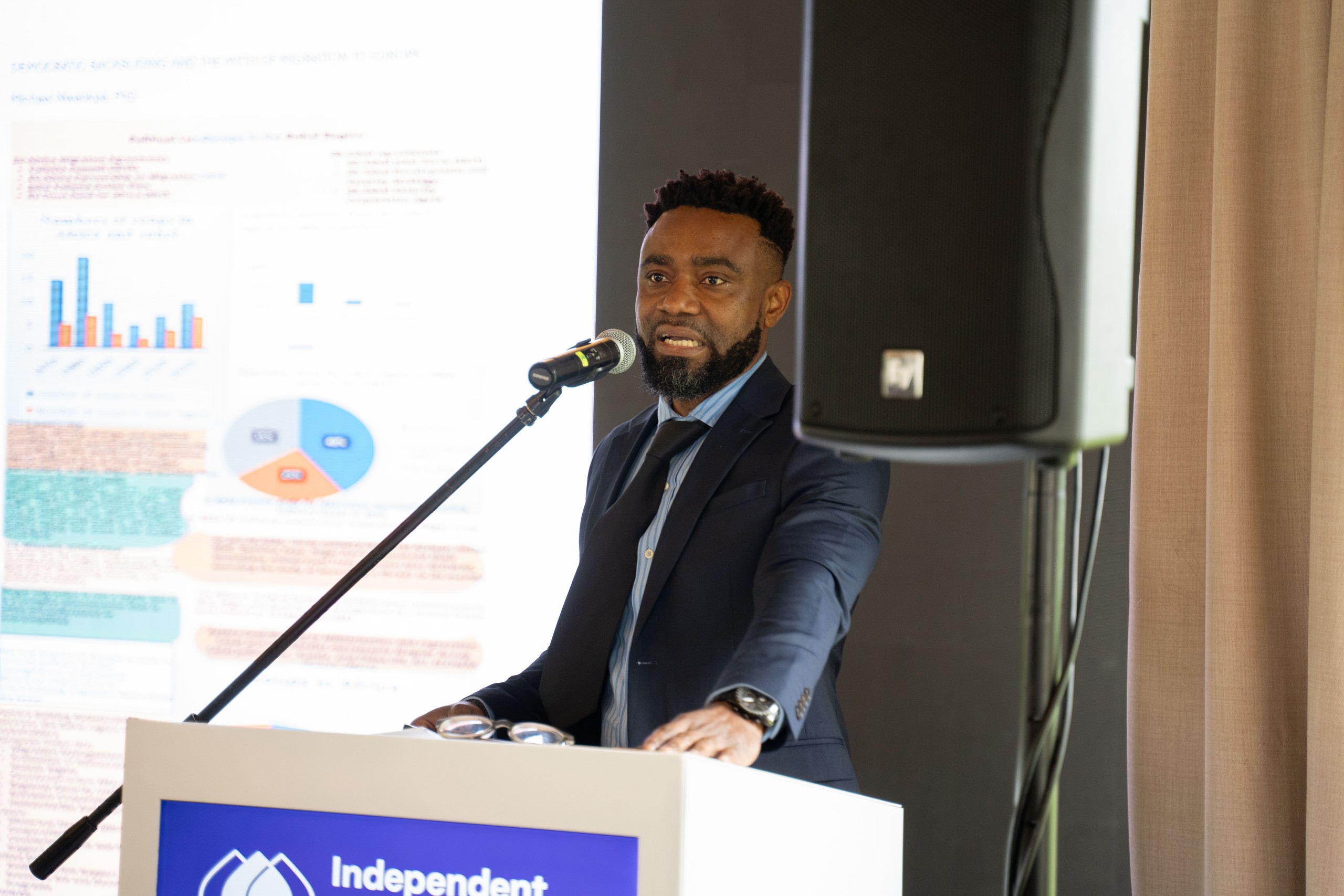
Michael Nwankpa speaking at the 2024 ISRF Conference in Warsaw, Poland.
Migration to Europe: A Myth?
It is therefore important to measure the true scale of the migration crisis that has forced the West to compromise its liberal principles of democracy and human rights. EU-Africa cooperation is based on two distinct frameworks: 1. The Partnership Agreement with African, Caribbean and Pacific (ACP) states (also known as the Cotonou Agreement), signed in 2000 and 2. The Joint Africa-EU Strategy (determined at periodic Africa-EU Summits). The Cotonou Agreement has been replaced by a new Agreement—the Samoa Agreement which was signed by the EU and ACP countries on 15 November 2023. The Samoa Agreement is now the overarching framework for EU relations with African, Caribbean and Pacific Countries. One of the six strategic priority areas for EU-Africa cooperation in the Samoa Agreement is ‘Migration and Mobility’. The other priority areas include human rights, democracy and governance; peace and security; human and social development; inclusive sustainable economic growth and development; and environmental sustainability and climate change. Arguably, migration remains the most important concern of the EU, particularly in its relationship to and interventions in the Sahel.
In December 2007 during the second Africa-EU Summit of Heads of States and Governments in Lisbon, the EU launched the Partnership for Migration, Mobility and Employment (MME). Since 2017, the Africa-EU cooperation on migration is done through the Africa-EU Migration and Mobility Dialogue (MMD) framework. In 2015, the EU and African Heads of States and Governments held an international summit, the Valetta Summit, to address migration challenges. At the end of the Summit, they adopted a political declaration and an action plan to address the different aspects of the migration issue including irregular migration, migrant smuggling, human trafficking, protection of migrants and asylum seekers, cooperation on return, readmission and reintegration, legal migration and mobility as well as root causes of displacement and irregular migration. During the Summit, the EU established the Emergency Trust Fund for Africa. The EU has also signed bilateral agreements with individual states—Cape Verde (2008), Niger (2015), Cooperation with Niger has been suspended since the coup of 26 July 2023. Nigeria (2009, 2015), Mauritania (2024), Senegal (2016) The European Border and Coast Guard Agency (EBCGA) and Senegalese authorities cooperate in the context of the Africa-Frontex Intelligence Community (AFIC). and Ethiopia (2015). Evidently, with the expansive migration policies and agreements between Africa and the EU, migration and mobility is a major concern for the EU.
Interestingly, the vast percentage of migration (up to 84%) in Africa is internal. More interesting is the fact that the great majority of migrants in Africa are internally displaced, meaning they do not cross borders, but stay within their countries. While migration outside Africa has been increasing, especially in the last decade (due to economic crisis, climate change and political and armed violence among other things), African migrants constitute the lowest figure when compared to the world’s total migrants (which is around 250-290 million). Only 26 percent of African migrants live in Europe. 53 percent live in Africa while 12 percent live in Asia and 7 percent in North America. UNDESA 2017, as cited by Erhabor Idemudia and Klaus Boehnke, Psychosocial experiences of African migrants in six European countries: A mixed method study (Springer Nature, 2020). Seemingly, overwhelming migration from Africa to Europe is a myth. Yet, Europe has securitized and politicized migration. The EU has expanded its border control by establishing asylum centres in third countries including Africa through Frontex (the EU border and coast guard agency)—reflecting an extra-territorial reach and control. More so, the securitization and politization of migration fail to conceal the fact that receiving countries in Europe benefit from migrants’ economic contributions. This has been made more acute in the face of labour shortages in an ageing European population.
Conclusion
This study has focused on recent militarization in Africa, particularly in the troubled Sahel, a region that is notorious for extreme climate change and, consequently, climate change-induced mobility. The study concludes that the securitization and politization of migration by European countries both directly and indirectly contribute to democratic backsliding in the region as support to local partners encourages militarization and other undemocratic practices that are counterproductive. [9] Wendy Williams, ‘African migration trends to watch in 2024’, Africa Center for Strategic Studies, January 2024. Accessible at: African-Migration-Trends-2024.pdf. P. 10: ‘Senegal passed a National Strategy to Combat Irregular Migration in 2023 to reduce irregular migration by 2033. The EU provided Senegal with $9.9 million— part of which went toward a new headquarters for Senegal’s air and border police—to stop irregular migration. Lacking other human security measures, this approach, like those in Niger and on the central Mediterranean coast, may increase interdictions as well as make crossings more dangerous—as increasing death and missing reports indicate.’ The study also argues that migration from Africa to Europe is not as significant in comparison to migration and displacement within Africa—hence concluding that the idea of high migration figures between Africa and Europe is a myth. We need to adopt a humane and sensible approach to migration—one that not only addresses the root causes and drivers of migration, but more so, amplify the mutual benefits that migration brings to both origin, transit and destination countries.
See also...
Feature image from Wikimedia Commons.
Conference image by Marcus Hessenberg.
Bulletin posts represent the views of the author(s) and not those of the ISRF.
Unless stated otherwise, all posts are licensed under a Creative Commons Attribution-NoDerivatives 4.0 International License.
